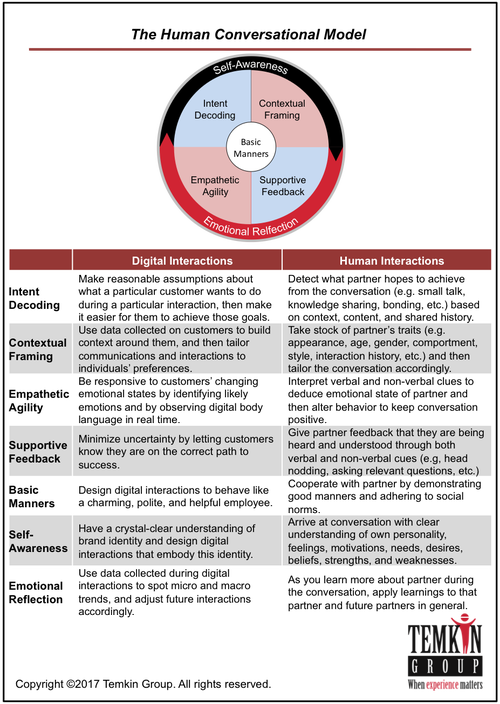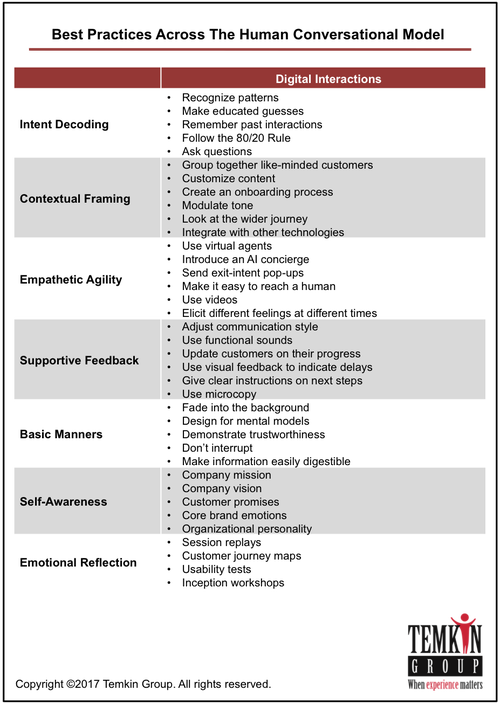Tags
Here are some highlights from a recent Temkin Group Report:
- They developed The Human Conversational Model, which is made up of seven elements – Intent Decoding, Contextual Framing, Empathetic Agility, Supportive Feedback, Basic Manners, Self-Awareness, and Emotional Reflection.
- Share over 35 examples of best practices from companies that are designing digital experiences across the seven elements of The Human Conversational Model.
- Demonstrate how you could apply The Human Conversational Model to three types of digital activities: opening a new bank account online, purchasing a pair of shoes through an app, and getting technical support online.
According to Temkin, a gratifying conversation requires two processes:
- Cooperative Interface. Each participant is required to collaborate with her partner to achieve the shared goal of the conversation – be that casually catching up, gathering information, sharing knowledge, etc. This is the part of the model that a conversational partner sees and responds to, and it consists of five elements: contextual framing, intent decoding, empathetic agility, supportive feedback, and basic manners.
- Background Mindfulness. This portion of the model is not observable within what would normally be considered the scope of the conservation as it pertains to what happens internally within person. Each participant has a pre-existing notion of who he is as an individual (self-awareness) and throughout the course of the conversation, learns about how he affects other people (emotional reflection). Though not directly observable, “background mindfulness” informs the way in which each participant communicates with his current and future partners.
Source: Report: Humanizing Digital Interactions – Customer Experience Matters®


